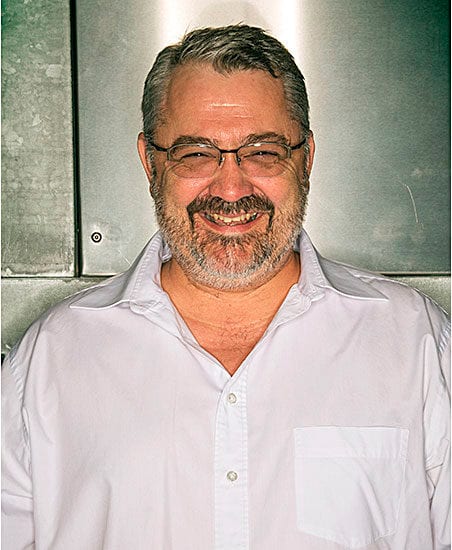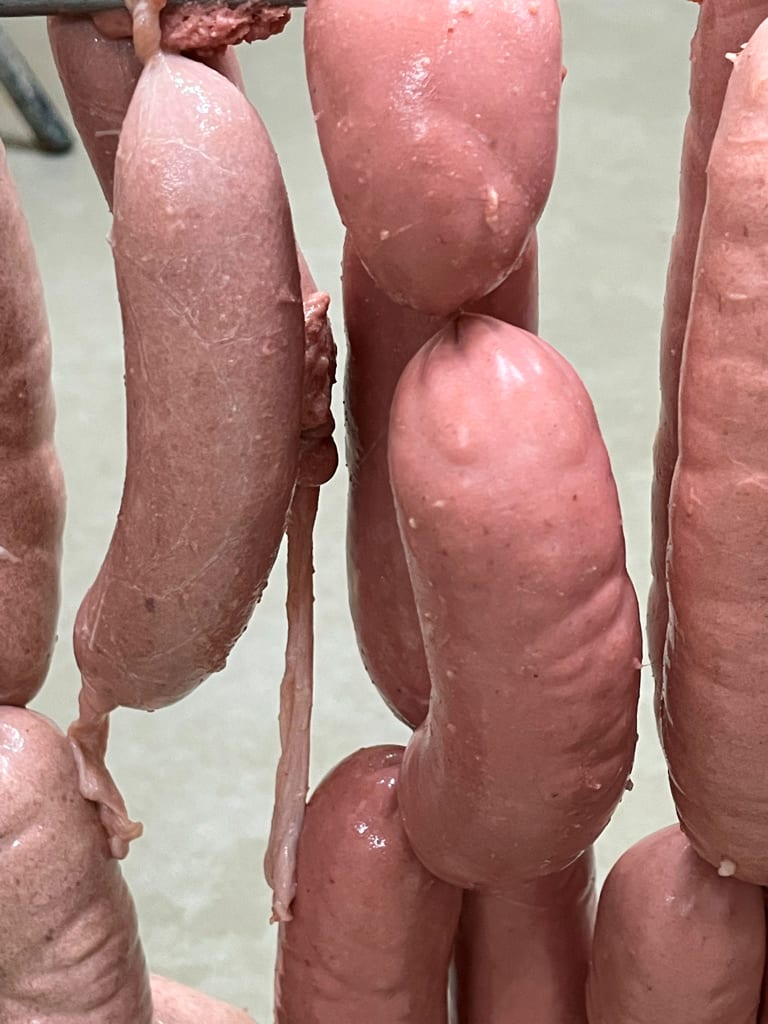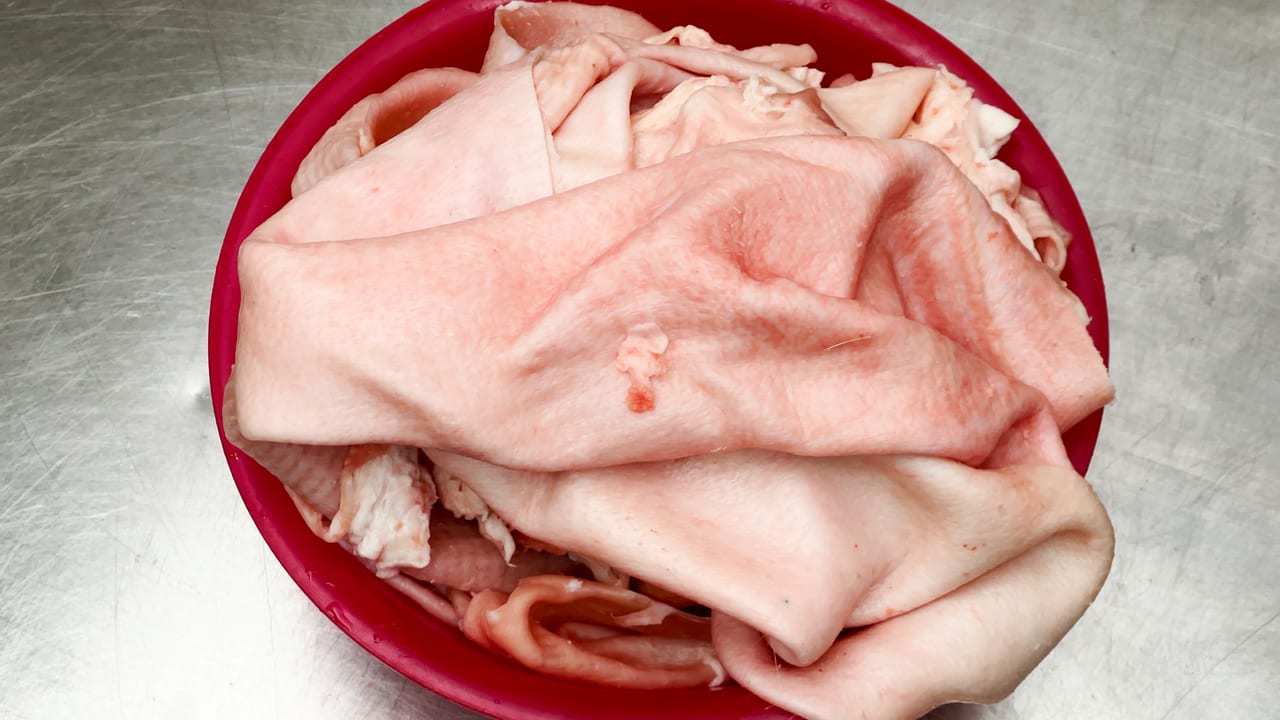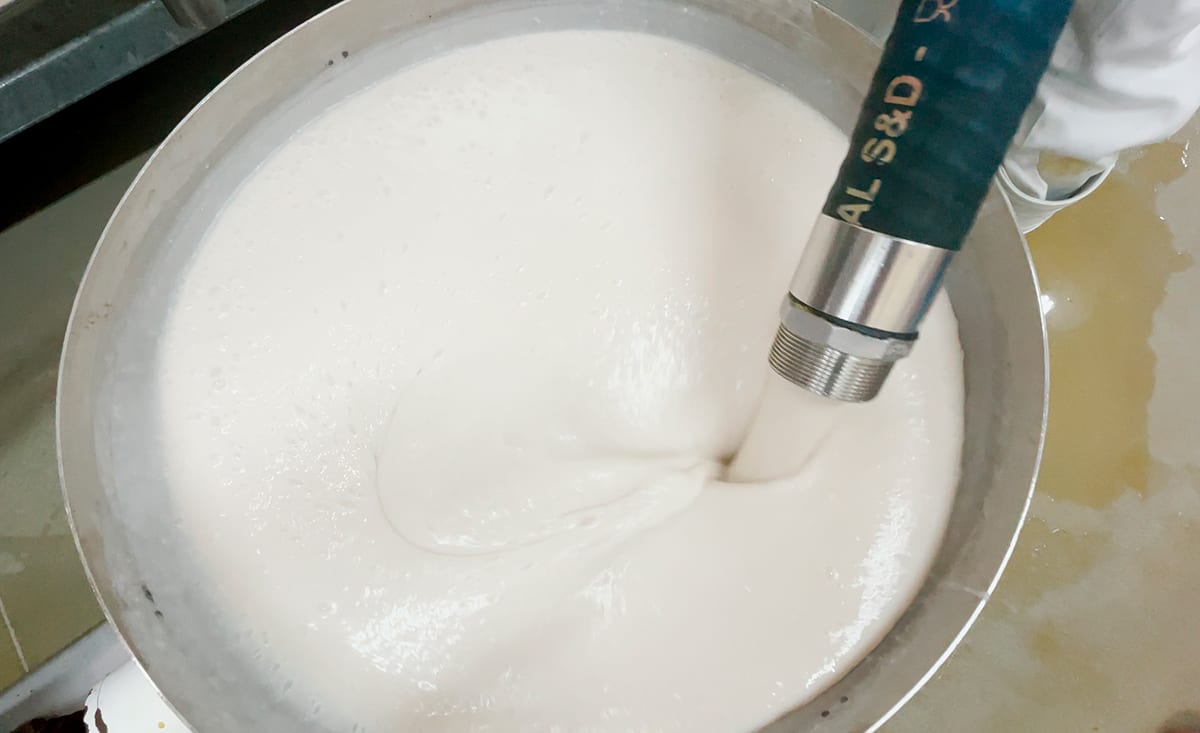While most food processors aren’t yet relying only on plants for protein sources, the tools now exist to make more sustainable use of animals as food sources, and highly nutritious ones at that
Proteins: Use the entire animal
Back in 2016, in this column I featured new technology aimed at reducing vegetables and fruits—and especially the usually discarded parts—down to and including the molecular level, so nothing gets wasted. Roy Henderson, CEO of Green Cell Technologies® (GCT®), and his Research and Development Director Jan Vlok, dubbed this new technology “Dynamic Cellular Disruption®” (DCD®) and Disruptor® technology, and designed and co-founded the company around it.
The pair saw a real need for this product in some parts of the world, where climate and soil issues create extreme food shortages. In 2016, I described this technology as a method “to provide food manufacturers with a compact and cost-saving way to process their food more expediently, reduce waste and improve nutritional quality. The Disruptor can deal with any product that’s flowable—wet or semi-dry (1 to 100,000 centipoise)—and can break the product down to a molecular level—with the insoluble fiber being sub-150 microns. To do this, the device requires some high-tech materials—seals that can withstand pressures to 900,000 psi and a new metal alloy that tops all other materials on the Rockwell hardness scale.”
As food shortages around the world haven’t lessened, Henderson wondered whether this technology could be applied to meat and protein products, that is, use everything—the meat itself, gristle, skin, tendons, etc.—well you get the idea. Literally no waste, except the bones, which can be handled in the usual ways—though he’s working on that, too. Using its patented DCD method in combination with its Disruptor technology, GCT has worked with industry experts to conduct trials on meat cuts usually difficult to process (including 5th quarter), but which, nevertheless contain high nutritional value and other benefits.

Roy Henderson, CEO, Green Cell Technologies
“Being at a molecular level, emulsions derived through GCT’s patented technology have consistent particle size,” says Henderson. “Because of bigger surface area, the gel formation also has a different dynamic. This gel has a greater ability to create crosslinks and binds together in a homogenous product that holds better than has ever been done before.”
“Animal skins (with hair), tendons, gristle, etc.—when deconstructed, are exceptionally high in protein and are rich in collagen and all the more valuable in their molecular form,” adds Henderson. “This can be used for human or animal food.”
I asked Henderson what GCT has been up to since 2016.
FE: How long have you been experimenting/researching this technology for meat/protein applications? What hurdles did you need to overcome?
Henderson: We have been “playing” with this thought on and off since 2016; in fact, on October 3rd 2021, it will be five years. We started by hypothesizing what the effect would be if we DCD’d this or that (we really threw some weird materials into the Disruptor such as hearts, chicken wing tips, blood, pancreases, chicken skin, chicken popes’ noses, skins, hooves, hair, etc.—not altogether of course, although that is also possible). After about a year we started to see a pathway open, which allowed us to review what was conventionally accepted in processing of that type of material.
Once we established a starting and end point, we needed to review the information we studied, and compare it against the result DCD and Disruptor technology would produce, which was often a complete unknown. A simple example is the previous lack of ability to easily process hair down into keratin, which is the most locked-in protein, but not now as DCD and Disruptor technology makes it possible.
As we progressed and we learned by trial and error, we were able to produce an actual edible product, which confirmed, in the case of South African legislation, that there was a commercially viable product and one the Disruptor can deliver quicker, given the datum we have elicited over these trials to date. We continue to conduct a variety of trials at our Centre of Excellence in Cape Town for clients from all over the world and the results show conclusively that DCD and Disruptor technology are an excellent commercial and sustainable solution for all manner of meat processors.

FE: How does this process differ from what you would use with plants or fruit?
Henderson: Not a lot really. The nature of meat might need different up-front preparation and preprocessing, but in the end, we are taking a natural source material (in this case predominantly meat derivatives) and “Disrupting” it into an emulsion that lends itself as an ingredient or complex formula for final processed consumer meat products.
We have actually processed beef and pork fillets and made what I can only describe as a meat paste; it actually tasted great and has a very good mouth feel. This was only done to see what the outcome would be as part of our experience portfolio. What we did derive from this exercise—and one of the applications is to improve “brining” (it might be different in name in different countries/regions), which is the practice of bulking meat with a “brine” (usually legislatively controlled as to what can go into a brine).
You may have noticed how a cut of meat that you are cooking or roasting loses so much volume because the brine effectively cooks out and the meat returns to its original or near original weight. If we take waste parts from that animal (according to accepted regional legislation) and we DCD it into a fine emulsion and inject it (process of brining) into the meat it will increase yield/weight. When cooking, it will not cook out—other than the natural water found in the meat in the first place, instead it will actually form new meat.
These sausages were created using DCD technology. All images courtesy of Green Cell Technologies
FE: From the video, it looks like you have additional equipment for the meat process compared to the vegetable/fruit process. What is needed prior to the disruptor process? Is this ancillary equipment off-the-shelf, or have you designed it?
Henderson: We do have the requirement to mince the material and at times cut a bit finer before DCD to assist the effect of the Disruptor. Most of the ancillary equipment is off the shelf, although we do prefer to advise our clients as to the whole process so as not to adversely affect the Disruptor outcome—our on-staff processing engineer is worth his weight in gold for this purpose, saving our clients time, effort and of course money.
However, we are also in final design and development for a novel bone pre-processing equipment, which is exciting and keeping us busy at present.
FE: Would you separate the resulting protein/meat product into constituent parts—e.g., fat, protein, etc.?

Pre-DCD sausage mix minced in preparation for the DCD process.
Henderson: It is up to what the client wants and how they direct us—if we are doing trials or toll manufacturing for them. Our business model is to license our technology to clients for them to use for their own purposes. That said, the meat emulsions produced by DCD and the Disruptor can be separated if required and the correct processes are used; although, if we had our way, we would like to see whole deconstructed meat products marketed to consumers that would provide them with excellent nutrition. Taste, of course, would be up to the manufacturer and their preferred spice pack.
We can, of course, easily extract components such as amino acids or collagen etc. from the resultant emulsions, which adds further value to the source material, and can now be beneficiated in several profitable and useable ways.
“Our strategic view is to aid meat processors, and ultimately the environmental impact and assist the move towards net-zero, by enabling the production of more human and animal food with the crops and inputs the planet already has.”
— Roy Henderson, CEO, Green Cell Technologies
These are pork tendons, pre-DCD process.

FE: What food applications might be possible?
Henderson: There are numerous applications with this technology such as: processed meats like Russian and Vienna sausages etc., polonies, pressed hams, Spam or bully beef in a can, meat sauces for pies, canned food etc., binders, fat replacers, showpieces for processed meats, fine emulsions for brining/bulking, fertilizers, extraction of specific chemistry, replacing render plants for animal feed, binding and functional ingredients.
Our strategic view is to aid meat processors, and ultimately the environmental impact and assist the move towards net-zero, by enabling the production of more human and animal food with the crops and inputs the planet already has—which is eminently doable by being more effective and efficient in our processing.
We also have our eye on creating future products that are hybrids of meat and plant sources, which will also assist in the transition to strong plant-based products as a protein source. Therefore, we’re effectively supporting all related industries, especially as consumer preferences shift toward plant-based foods and derivative markets over the next several decades.
FE: If there were a problem with product longevity (due to bacteria), you could certainly run it through an HPP process. Correct? Hyperbaric now has a bulk liquid process.
Henderson: HPP is a great in-package solution but it does not assist the TMA (total microbial activity) issues in the manufacturing process where the losses occur. Also, DCD and Disruptor technology promote TMA cleanliness and stability by killing bacteria within the process, which means that products can be produced not needing a further kill step such as HPP. This may not be what the HPP market wants to hear, but without the requirement for HPP, the value chain cost is reduced and the consumer can be offered a cheaper product.
Lab tests bear out the effectiveness of bacterial kills through the DCD/Disruptor process. Trials were conducted at GCT’s Centre of Excellence in Cape Town, South Africa, and involved pork tendons in the first trial and pork tendons & rinds together in the next.
• The DCD emulsions were sent to independent internationally recognized laboratories for analysis (assays available on request).
• The results conclusively prove that there is vastly reduced to “no growth” TMA when using DCD.
• GCT can conclude that DCD extends cold chain shelf life of processed meat emulsions not yet in a final product by 2700% or 2300% for the two trials, respectively.
The pork tendons after the DCD process may look like milk in the photo, but is really collagen.

FE: Do you have any prospective customers interested in this technology from a food perspective? Nutraceuticals?
Henderson: Yes, we do, although we are not at liberty to disclose exact details now due to NDA’s but we are very close to finalizing orders for Zambia, Botswana, South Africa and Tanzania, and we are currently engaging Mexico and Australia.
FE: I could see where the pet food industry could benefit from this technology. Could it simplify rendering for creating pet food inputs? What do you think?
Henderson: It will not just simplify rendering it will negate the necessity for it. Today, all the cuts or parts of the carcass that cannot be processed or used are boiled beyond recognition and then processed into animal food. We can take that same source material and DCD it and then extrude it into animal pellets and other food formats. DCD will contribute significantly to net zero goals and will cut power costs by removing the need to boil anything, which will be a massive boon for the environment. Additionally, the boiling process kills most of the goodness and with DCD and Disruptor technology, better nutrition is achieved along with improved yields, which again is a big positive.
FE: How do you work with clients in different countries with different regulations?
Henderson: We are client directed and in the case of meat, it is very heavily driven regionally by legislation; i.e., what is permissible in China is not that same as the USA and Australia etc. Therefore, we will work with the client to conduct trials with the materials of their choice to produce legally approved meat products, thereafter once they have purchased a Disruptor, we are on site to set it up according to their needs and we are on hand with advice and assistance as and when required. It is a surprisingly easy technology to use.
Case study: We are currently engaged with a client in another country who is focused only on what to do with their skins, blood, tendons, etc. We can make product according to the rules of that country.
The benefit of DCD is that these parts will not be organoleptically detectable—and only adds to the protein/chemistry make-up and taste of the product and the binding ability/functionality of the end processed product. This effectively starts to clean up the labels because the necessity to add as many processing agents/chemicals and functionality agents can be reduced.
FE: Is this entire process available soon or now?
Henderson: If you ordered a system today, we would be able to commission it on site in about five to seven months’ time (four months to build and two months to ship (depends on schedule) although COVID does have its own effect on timescales).
FE: Any other comments—what do you see in the future?
Henderson: Just looking at rendering plants alone, which are a massive burden on meat industry players and often run at a loss, and which are excessively power hungry, they could be replaced literally overnight with a very nutritious animal/pet food outcome. The net zero imperative in this industry is here now—not waiting for 2050.
David Bowie’s famed song, “Space Oddity,” is maybe now not so much science fiction, but a science fact—take your protein pill and put your helmet on, Major Tom. DCD and Disruptor technology is the technology that will facilitate the shift to that “protein pill” and possibly slow down the race to space for fear that earth will stop being a “life raft.” Notwithstanding this, DCD and Disruptor technology can, of course, provide the new space travelers with space food, and we have some really good ideas here too.
For more information, visit Green Cell Technologies. FE

